
March 20, 2023
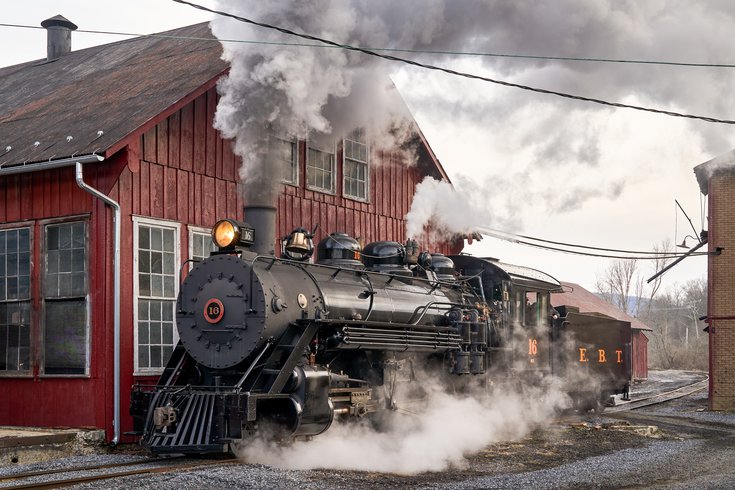 Provided Image/EBT Foundation
Provided Image/EBT Foundation
The East Broad Top Railroad in Rockhill Furnace, Pennsylvania has restored a 107-year-old, steam-powered locomotive built by Philadelphia's Baldwin Locomotive Works in Philadelphia. The engine will be used to pull trains for guided tours starting in May.
The steam era of railroading in the United States is among the most storied, transformative legacies in the long saga of American industrialization.
Chugging, hissing locomotives that spewed plumes of smoke across 19th century landscapes were the foundations of the modern economy. They gave mobility to society, resulting in new cities and businesses sprouting along regional and long-distance rail networks. Steam-powered trains dominated more than a century of travel and industrial output until diesel engines began replacing them in the 1930s.
Few technological feats have done more to power human ingenuity and expansion than the steam engine, yet how many people living today have actually ridden a steam-powered train? They endure as images of an indelible, romantic frontier, but they're also now relics with little practical use on modern railroads.
Just don't mention that to the rail enthusiasts who operate the remnants of the East Broad Top Railroad, a 150-year-old, coal-hauling, freight line that once traversed 33 miles of main line track in central Pennsylvania, about a three-hour drive west of Philadelphia. Considered a sacred site in the rail community, the EBT in Rockhill Furnace, Huntington County, is the oldest surviving, narrow-gauge railroad east of the Rocky Mountains.
And soon it will offer visitors the chance to experience the magic of a steam-powered train that was built more than a century ago by Philadelphia's Baldwin Locomotive Works.
Dubbed No. 16, the restored train began operating last month along the 4 1/2-mile stretch that the non-profit EBT Foundation started rehabilitating in 2020. The organization's mission is to preserve the history and scenery of legacy transportation for future generations.
No. 16 rides along a 4.5-mile stretch of the East Broad Top Railroad in Rockhill Furnace, Pennsylvania.
"The whole purpose of heritage railroads like ours is that you can't be nostalgic for an experience you never had," said Jonathan Smith, EBT Foundation's director of sales and marketing. "Most of us never took a steam-powered train across the country. Most people have never taken a train across the country, period, when it used to be such a common thing for our grandparents and people before them."
When the EBT's 2023 season begins on May 6, No. 16 will power one-hour, 9-mile roundtrip excursions aboard a vintage caboose, enclosed coaches and open-air cars. Fares start at $20 for adults and $15 for children. The foundation also offers guided tours of the EBT’s 19th- and early 20th-century machine shop complex, along with special events throughout the year.
The East Broad Top Railroad was built in the 1860s, during the Civil War, and operated between 1872-1956. Its original purpose was to haul coal from the Broad Top Mountain plateau to support the iron production operation of the railroad's sister company. The railroad later grew to supply coal to the fire-brick plants of Mount Union, about 11 miles north, and also carried other raw materials including ganister rock, lumber, concrete and agricultural goods, in addition to passengers. It was designated a National Historic Landmark in 1964 and added to the National Register of Historic Places in 1966.
Narrow-gauge rail refers the distance between the two, parallel, steel rails on which a train rides. Standard-gauge rails have a measurement of 4 feet, 8 1/2 inches. Most metros, Amtrak trains and all freight trains today are standard gauge. The EBT's tracks are 3 feet wide and were built to handle the region's mountainous terrain.
"You can navigate sharper curves, which allows you to hug the terrain better and go up steeper grades," Smith said. "It saves a lot of costs when you're building a mountain railroad. Where you would normally have to dig a tunnel, you can just go around it, or you don't have to build a bridge because you can snake your way down the valley and come up the other side."
Although narrow-gauge rail began to fade by the start of the 20th century, the EBT remained committed to using steam-powered trains even after the widespread adoption of diesel engines in the late 1930s. This made the EBT a valued customer of Baldwin Locomotive Works, which was founded in Philadelphia in 1831 by jeweler and whitesmith Matthias W. Baldwin. Baldwin had pivoted several years earlier to the highly specialized, steam-engine business, which had first thrived in England, and he became an innovator whose nascent company grew an advantage in a revolutionary industry.
Baldwin Locomotive was originally established in a factory at Broad and Spring Garden streets. It eventually expanded south to Hamilton Street and west to 19th street, with a satellite campus between 26th and 28th streets, along the Callowhill Hill cut. The main factory complex was demolished in 1937 when the company moved operations to Eddystone, Delaware County. The land where a portion of the Philly complex once stood is now Matthias Baldwin Park, and Baldwin also has a statue outside City Hall.
During the heyday of steam-powered locomotives in the U.S., Baldwin's company was among the "Big Three" next to American Locomotive Company (Alco) and Lima Locomotive Works. Baldwin Locomotive became one of the world's most prolific manufacturers of steam locomotives, churning out thousands of them at its forward-looking, racially integrated factory, which was hailed as an exemplar of industrial shop management.
"Baldwins were everywhere," Smith said. "Their mark was left on the nation's industry from the early 1880s until they closed in the 1950s. Most steam locomotives in the country were built by Baldwin. East Broad Top happens to own six of them."
The East Broad Top foundation's restored No. 16 locomotive was manufactured in Philadelphia in 1916 by Baldwin Locomotive Works, then one of the world's foremost manufacturers of steam-powered locomotives.
Prior to the Civil War, much of Baldwin Locomotive's business was with railroads in southern states that later seceded, cutting off access to the company's biggest customers. The war necessitated a shift toward production for the U.S. Military Railroads and the Pennsylvania Railroad. The EBT became a loyal purchaser of Baldwin locomotives, since the narrow-gauge railroad didn't see a need to switch to diesel and there wasn't much of a market to supply a transition.
"Narrow-gauge diesel locomotives are almost more rare than narrow-gauge steam engines, only because there were so few ever made," Smith said.
During World War I, Baldwin Locomotive Works was a major supplier of locomotives, artillery shells and rifles for the Allies, but the company was hard-hit by the Great Depression and the emergence of diesel and electric models in the ensuing years. The Pennsylvania Railroad Co.'s selection of General Electric's PRR GG1 locomotive in 1934, instead of a Baldwin design, marked the beginning of a decline that led to the company closing in 1956, the same year the EBT discontinued service.
From 1960 until 2011, the East Broad Top Railroad was revived as a tourist line by the family of scrap dealer Nick Kovalchick, who had purchased the railroad. Its upkeep became too much for the family to manage over the decades. The railroad and its Rockhill Furnace shop complex fell into disrepair.
But three years ago, the EBT Foundation was formed by a team of prominent rail industry leaders — including Kovalchik's son, Joe — to restore a portion of the railroad and turn the historic grounds into a "living museum" for steam-powered rail in central Pennsylvania.
"We basically had to dig the railroad out of the dirt. It had sat dormant for nine years, but even before that, (the Kovalchiks) were struggling to keep up with it," Smith said. "There was a lot of overhead maintenance that we had to do. We had to replace 10,000 wooden ties. We had to completely go through all of the railroad's rolling stock, train cars and equipment."
When the foundation purchased the railroad, all of the steam locomotives it owns were out of commission. During the initial years of the new attraction, the foundation conducted guided tours using a custom-built, diesel-powered, narrow-gauge locomotive. That was to pave the way for the refurbished No. 16, which was built in 1916.
Smoke billows from the steam-powered locomotive No. 16, which has been restored for guided tours by the East Broad Top foundation.
No. 16 is one of six narrow-gauge Baldwin Locomotive engines purchased by the EBT between 1911-1920. It's known as a "Mikado" because of the Japanese-designed wheel arrangement that features two front wheels, eight drive wheels, and two trailing wheels.
"Those six locomotives led the EBT into the modern world," Smith said.
Over a period of about three years, a team of about 10 engineers rehabilitated No. 16 into working order. It was chosen because it was in the best shape among the steam-powered trains the EBT owns. The process of restoring steam locomotives typically can take more than a decade.
"The amount of people who know how to take a steam engine apart, inspect it, put it back together again and meet all the federal standards is very small," Smith said. "You can't order steam locomotive parts on Amazon. Because EBT is so nationally significant, we've had help from some of America's leading steam experts. They took their time, they did it right and they did it diligently, but they made sure that we were able to get back to being a steam-powered railroad."
The complexity of restoring a steam-powered locomotive underscores one of the main reasons that these trains were supplanted by diesel models in the first place. It wasn't because the trains didn't work well.
"Steam engines are really efficient, actually, as far as their pulling power," Smith said. "They stopped running because of the incredible maintenance costs. You had to pay three shifts to take care of them. You've got the actual shift that's running the engine. There's an overnight shift that's keeping them hot for the next day. There's all the oil and grease and coal, not to mention that when something breaks, everything has to be machined and fine-tuned to that specific locomotive. That just became too much to bear for railroads when you could have a fleet of diesel locomotives that are all exactly the same."
In addition to the tours in Rockhill Furnace, EBT has a fleet of historic passenger cars that date back to the 1880s. They're wooden and were not meant to last more than 30 years, so they're kept for display. Last year, the foundation purchased four brand-new narrow-gauge cars that were designed to look like they fit in with the original fleet. They have plush seats and large viewing windows.
The tours offer three classes of service. Rides can board open air cars with waist-high walls, enclosed coach cars that look forward and backward, or a caboose with the cupola to peer through up top.
A new coach car pulled by No. 16 on the East Broad Top Railroad has plush seats and tall windows great for photography.
Visitors of the East Broad Top railroad can ride in the caboose pulled by the restored No. 16.
"There are places you can ride behind steam," Smith said, "but most of the time it's only once a month, or a handful of times a year. We are a primarily steam-powered railroad. No. 16 will be powering all of our special event trains and regular excursion trains, unless there is some sort of mechanical issue."
One of the most exciting features of EBT's facility is the belt-driven machine shop that showcases the broader applications of steam power in the late-19th century.
"We basically have an entirely complete blacksmith foundry — everything that they needed in 1872 to keep the railroad running. You open up the doors and it's not 2023. At the latest, it's 1920," Smith said. "There isn't a single piece of equipment that has an electrical outlet. It was all steam-powered. There was a steam engine that spun a wheel that had belts connected to it. That belt went up to the rafters, and then another belt came down to that machine. People can't fathom that because now you press a button, there's an electrical whirl, and on it goes."
Most heritage railroads that operate steam-powered trains don't operate frequently — maybe once a month, Smith said. Reliance on outside support also makes the longevity of heritage railroad initiatives uncertain. One of the most prominent restoration examples in recent memory is the Union Pacific Big Boy — the world's largest steam locomotive — which returned to train tracks in the Midwest in 2019 for a series of tours in several states. The train stopped operating last year.
EBT Foundation aims to make No. 16 a steady, daily feature in central Pennsylvania in the years to come. It debuted in February during the foundation's Winter Spectacular. The organization's goal is to continue expanding the length of usable rail to create a more immersive, educational rail experience.
"When you come to East Broad Top, you see this massive steam engine. You see all the rods, the wheels, the linkage, the smoke, the air compressor thumping," Smith said. "It's a very tangible, visual experience. It's all of the senses. You taste the coal particles when they hit your mouth."
East Broad Top Railroad is located within an hour's drive of Raystown Lake, the largest lake in Pennsylvania and a destination for travelers. Smith is hopeful that No. 16 will be among the attractions that draw new people to the area this summer.
"Rail fans know we're here. Most of them know about it and it's a bucket list thing," Smith said. "We're reaching out to the leisure families, folks who are looking for something to do with their kids or a way to spend a weekend."
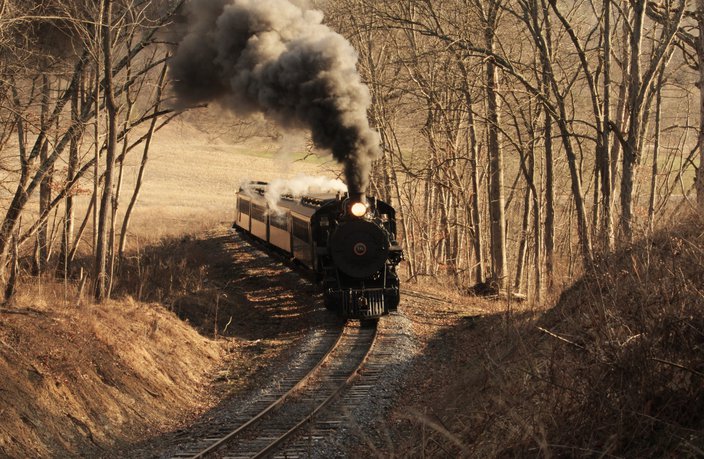 Provided Image/EBT Foundation
Provided Image/EBT Foundation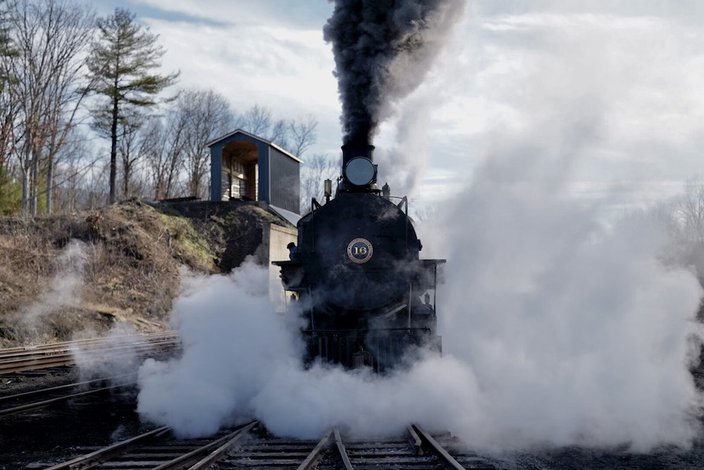 Provided Image/EBT Foundation
Provided Image/EBT Foundation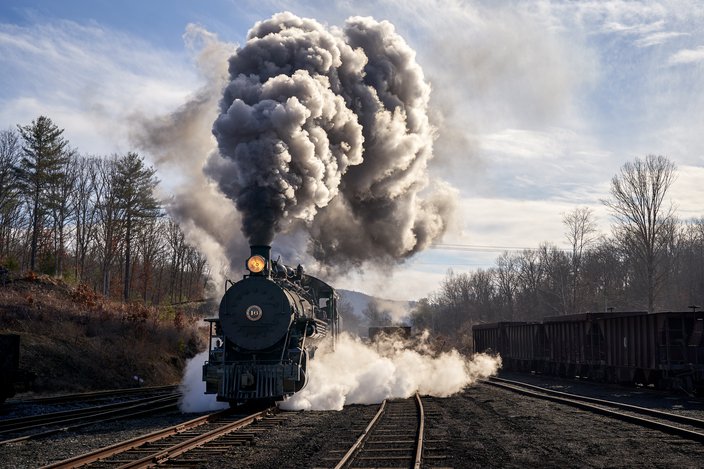 Provided Image/EBT Foundation
Provided Image/EBT Foundation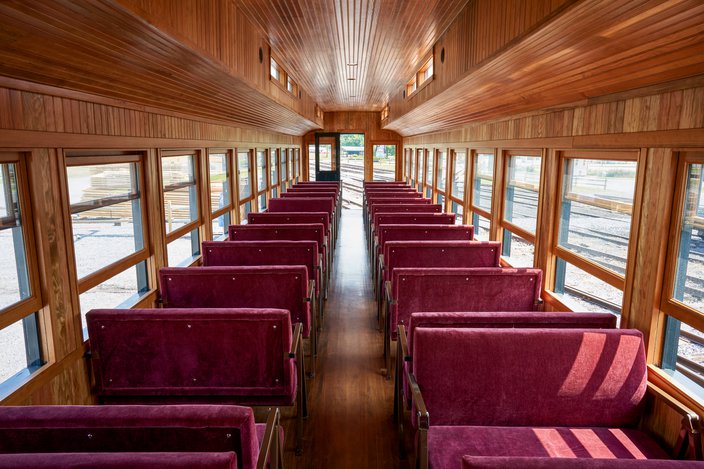 Provided Image/EBT Foundation
Provided Image/EBT Foundation Provided Image/EBT Foundation
Provided Image/EBT Foundation